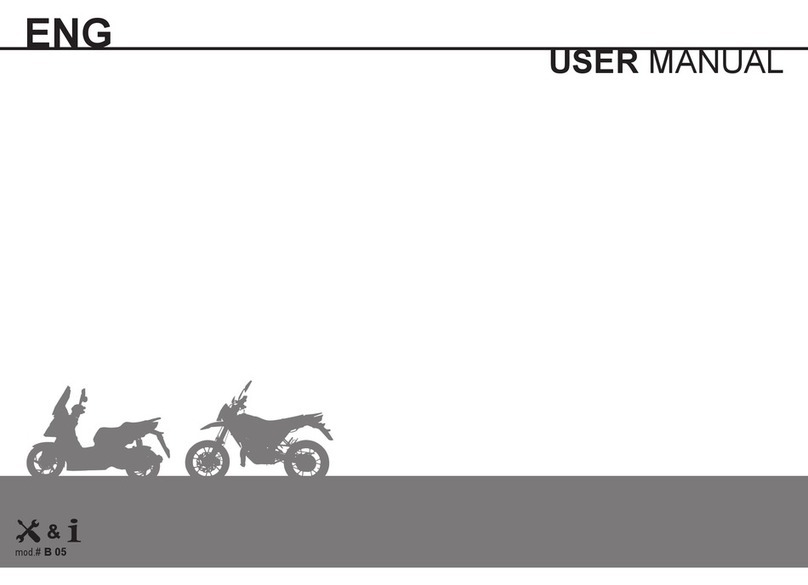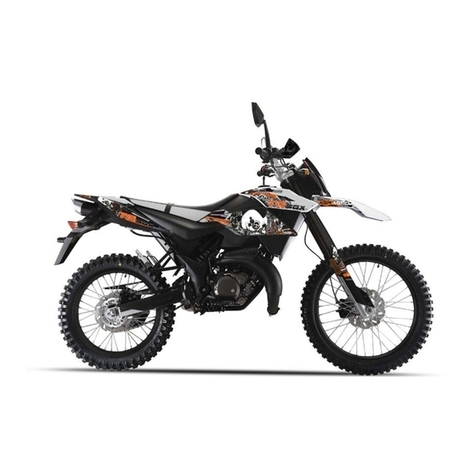TABLE OF CONTENTS
4
SAFETY INFORMATION ............6
Other Safe driving points..............9
Location of labels ........................10
DESCRIPTION............................11
Left view ....................................11
Right view...................................12
Operation instruments ................13
INSTRUMENT AND CONTROL
FUNCTIONS
.............................14
Main switch/steering lock............14
,ndicator and warning lights ........1
+andlebarswitches.....................1
Front brake lever .........................18
Rear brake pedal ........................18
Fuel/ Fuel Tank .........................18
Seat………………...…….....…...19
Engine oil…………………...........20
Sidesstand..................................21
Catalyticconverter.......................21
PRE-OPERATIONCHECKS.......22
Pre-operation check list ..............23
OPERATION AND IMPORTANT
RIDING POINTS.........................24
Starting the engine .....................24
Stop the engine ..........................24
Shifting and riding…….............…24
$cceleration and deceleration.....2
Engine break-in ..........................2
,nspection,nformation.................2
Parking .......................................2
CHECKING/ MAINTAINING
SERVICE INTERVALS..............27
Periodic maintenance chart.........28
Spark plug...................................30
$ir¿lter.........................................30
Oil drain pipe...............................30
Coolantinspection.......................31
Bleeding the coolant system.......31
ECU..........................................32
Adjust the idling…………..…......32
Checking the throttle cable free
play.............................................32
Clutch adjustment.......................33
Tires............................................33
Tire inspection............................33
Cast wheels................................34
Front brake ................................34
Front brake adjustment ..............3
Rear brake adjustment...............3
Brake pads.................................3
Front and rear brake brake Àuid..3
Lubricating of the cabes..............3
Front forke..................................3
Steering......................................3
Wheel bearings..........................38
Adjusting the chain tension ......38
Shock absorber...........................38
Battery.........................................39
Fuses..........................................40































